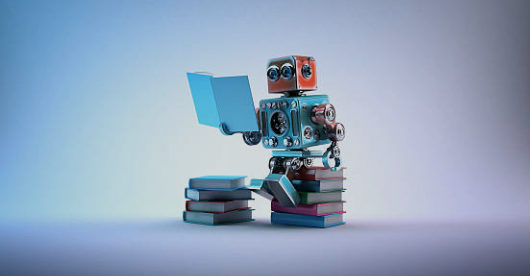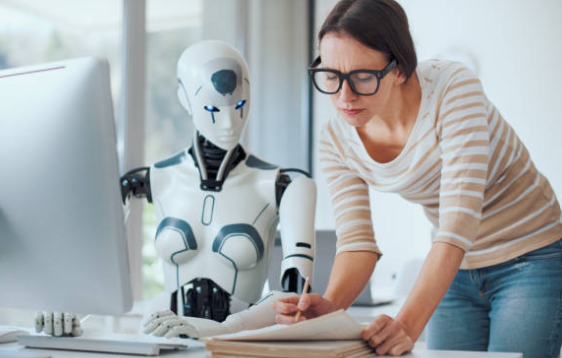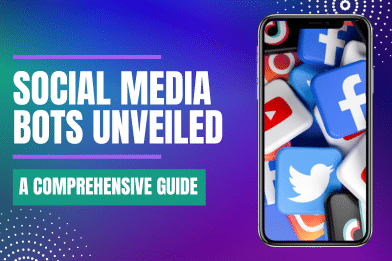In the ever-evolving landscape of social media, one term that has gained significant prominence in recent years is “bots.” These automated entities have become an integral part of the digital ecosystem, shaping public opinion, automating tasks, and sometimes even manipulating social media platforms.
In this comprehensive FAQ, we’ll unveil the world of social media bots, answering your burning questions on automation, repetitive tasks, and manipulation, all in one place. We endeavor to provide a comprehensive resource that consolidates essential information on this multifaceted topic.
Bots are designed to perform tasks on the internet, often autonomously and without direct human intervention. These digital agents are meticulously crafted to navigate the intricate web of interconnected platforms and websites, seamlessly interacting with online resources to achieve predefined objectives.
Whether it’s scouring the web for information, monitoring user activities, or facilitating seamless e-commerce transactions , bots excel at streamlining processes and enhancing efficiency in the virtual world.
Social media platforms represent a digital landscape encompassing online services and websites, serving as dynamic arenas where individuals can craft, distribute, and engage with a diverse array of multimedia content. These platforms facilitate the establishment of virtual connections among users, transcending geographical boundaries and enabling a global community to seamlessly converge in the digital realm.
Types of Bots: Badbots, Chatbots Source: iStock by Lidiia Moor
Bad Bots
Bad bots are malicious bots that perform harmful actions, such as spamming, scraping data, or launching cyberattacks. These pernicious automatons are designed with the primary objective of undermining the integrity and functionality of online ecosystems.
They engage in spamming activities by inundating platforms with unsolicited and potentially harmful content, thereby tarnishing the user experience and potentially causing reputational damage to businesses and individuals alike.
Data scraping , another facet of their deleterious repertoire, involves illicitly harvesting valuable information from websites and databases, often with the aim of profiting or leveraging sensitive data for illicit purposes.
Chatbots
Chatbots are bots programmed to engage in conversations with human users, providing automated responses to inquiries or performing tasks. Chatbots function as virtual conversationalists, seamlessly integrating into websites, messaging apps, and customer support interfaces.
It offers users a streamlined means of seeking information, solving problems, or accessing services. Through their advanced natural language processing (NLP) capabilities, chatbots have become adept at comprehending user queries, discerning contextual nuances, and generating appropriate responses in real-time.
How Bots Operate Source: FreePik by storyset
Bots are Automated
Social media bots carry out actions without direct human involvement. One of the defining characteristics of social media bots is their ability to interact with online communities in a manner that can mimic genuine human interaction.
They can initiate conversations, respond to comments, and even generate content , all while blending seamlessly into the digital landscape.
Bots Use Artificial Intelligence
Some bots use artificial intelligence (AI) to improve their interactions and adapt to user behavior. Artificial intelligence forms the bedrock of these sophisticated bots, providing them with the capacity to analyze vast datasets, recognize patterns, and make informed decisions.
Through machine learning algorithms, these bots continually refine their understanding of user preferences, needs, and language, allowing them to offer more relevant and context-aware responses.
Bots Can Also Be Used for Good
While they can be misused, bots can also serve constructive purposes, such as automating customer support or disseminating information. An organization with millions of social media followers might be using bot media platforms to do various influences on social media to promote and boost their social media presence and brand.
Common Examples Source: iStock by Guillaume
Twitter Bots
Twitter bots are prevalent on the platform, with some designed for productive tasks like news updates, while others spread misinformation or amplify particular opinions. Twitter bots have found a niche in disseminating news and information rapidly.
They can aggregate data from various sources and provide real-time updates on a wide array of topics, from sports scores to stock market fluctuations. This automation streamlines the process of information retrieval for users seeking quick and reliable updates.
Facebook Bots
Facebook also hosts a variety of bots, designed to mimic human users, from customer service chatbots to those responsible for content distribution.
Impact of Bots on Social Media Source: iStock by AndSim
Public Opinion
Bots have the potential to influence public opinion by shaping narratives and amplifying specific viewpoints. Bots operate tirelessly, transcending the limitations of human intervention. This relentless presence allows them to disseminate information at an unprecedented pace, making them instrumental in the propagation of narratives and viewpoints.
Whether it’s disseminating political ideologies, promoting products, or propagating misinformation, bots can flood social media users around the clock to amplify their designated messages.
Manipulate Social Media Channels
Social media bots can also automatically generate a large volume of likes, shares, and comments on specific posts or content. This artificial amplification creates the illusion of popularity and virality, enticing real users to engage with the content. This bandwagon effect can make content appear more trustworthy and appealing, thereby influencing user behavior.
Unfortunately, a significant number of Twitter bots are created with the intent to spread misinformation. These bots can be programmed to generate false news stories, manipulate images and videos, and artificially inflate the reach of misleading content. Their activities can contribute to the spread of fake news and confusion among users.
Bot Accounts
Some social media platforms have taken measures to identify and remove bot or fake accounts to maintain a healthier online environment. These automated bots can be used in dishonest and nefarious ways and imitate legitimate users posting content in an attempt to manipulate people.
They harnessed the power of advanced algorithms and used machine learning models to detect malicious social behavior patterns that are characteristic of many bot accounts. These algorithms continuously analyze user activity, such as posting frequency, content sharing, and engagement metrics, to flag accounts that exhibit abnormal or automated behavior .
How Do Bots Differ from Human Users? Source: iStock by denvitruk
Bots differ from human users in several ways:
Automation : Bots are automated , while human users operate manually.Consistency : Bots can perform tasks consistently and around the clock, whereas humans have limitations.Speed : Bots can execute actions much faster than humans.Pattern Recognition : Bots can recognize patterns and react to them, while humans may take longer to do so.Lack of Emotion : Bots lack emotions and personal opinions, making them objective in their actions. Are Bots Good or Bad? Source: iStock by nadia_bormotova
The morality of bots depends on their purpose and usage. In essence, these automated entities, bereft of consciousness, inherit their ethical coloration from the hands that guide them. On one side of this moral dichotomy , there exists a cadre of bots whose contributions to the digital landscape are undeniably constructive.
These automated marvels, designed with precision and intention, serve as the vanguards of efficiency, streamlining tasks and bestowing upon us a realm of seamless, user-friendly services. Others can be harmful when used for spamming, spreading disinformation, or manipulating public opinion.
The Role of Artificial Intelligence Source: iStock by da-kuk
Artificial intelligence plays a crucial role in enhancing bot capabilities. AI-powered bots can understand natural language, learn from interactions, and adapt to user preferences, providing more personalized experiences. One of the most remarkable facets of AI-powered bots is their adaptability.



